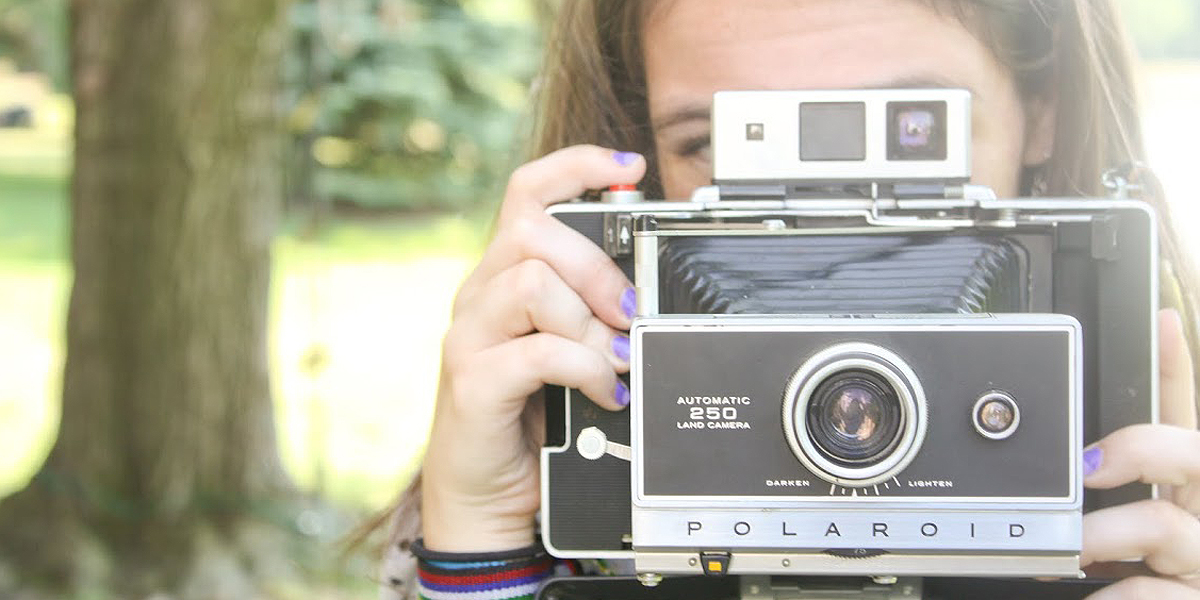Film is nothing but a fond memory, but breaking down the modern options in camera selection can mean the difference in whether or not you have the right camera with you when that perfect shot presents itself.

Photo by: Kayla Glyshaw
__________________________________________________
Photos are what people have to remember the great and wonderful things that have happened in their lifetimes.
The idea and function of a camera is no new thing. Primitive uses of cameras date back to pinhole cameras developed in the Middle Ages. It was not until the summer of 1827 that the photograph we know and love today was born.
These first cameras were very large and it would take a few minutes for the picture to be written onto the silver-plated copper sheet.
While the basic light-and-exposure process hasn’t changed since 1827, huge steps have been made in the overall field of photography, which have brought us to the simplistic ways we can take photos today. Today we simply point and shoot.
We moved from copper sheets to thinner tin sheets. Then to wet negatives and dry negatives, all the way to 1889 when flexible film came about.
In today’s world, anyone with a cellphone has a camera. However, they are limited in options and controls.
As phones have developed so have the cameras that are inside of them.
The average smartphone will take decent pictures but has a limited lens and not many pixels, but they are immediately ready to be posted on the photographer’s Instagram page, after of course it has been run through a few filters.
What if you want a better quality picture? This is where stand-alone cameras come into play, and there are several different types of them.
Let’s look at the different types of cameras and the basics of each type.
The next step up from a smartphone is a point-and-shoot style camera that has basic presets and a single lens, however, the camera phone has taken over this area of the market, so throw the idea of these out.
Then we move up to the DSLR (digital single-lens reflex) world. Disclaimer: Having a DSLR does not make you good photographer, it takes practice and a good eye for quality shots.
A DSLR works with mirrors inside the camera body for the operator to see the image through the lens and for the image to get to the sensor.
In the world of DSLR cameras there are two major companies, Nikon and Canon. Both companies make cameras from entry level DSLRs to high-end professional.
The basic DSLR cameras and kit lens start about $500 and go up from there.
In recent years, a new form of digital single-lens camera has come out, the DSLM, which is the same premise as a DSLR, but there are no mirrors in the camera. In fact, the “M” in DSLM stands for “mirrorless.”
DSLMs are fully digital and the viewfinder is a small LCD screen. So, while you are not seeing the actual image through the lens, or TTL, you are seeing a digital reproduction on your LCD screen.
As a result, DSLMs are smaller and weigh less than traditional DSLRs, which makes carrying your equipment and using them much easier.
This technology is being used in another category of camera that falls between the point-and-shoot and the DSLR, called the “compact” camera, sometimes called a “rangefinder” as a throwback to the old rangefinders of decades ago.
These compact cameras offer some of the functionality of a DSLR but in a smaller package easier to carry in one’s pocket. It’s more versatile than the point-and-shoot that modern smartphones have replaced, but not as elaborate in options as DSLRs.
But what really makes or breaks cameras are the lenses. Just like cameras, there are several types of lenses.
Most cameras will come with a kit lens, which is a standard lens with a short amount of zoom. These are fairly versatile lenses.
Then there are telephoto zoom lenses which have a long zoom able to bring far-away action up close.
Then there are macro lenses which are designed to take extreme close-ups of objects. Many of these lenses are single focal length or have no zoom.
The final type are wide-angle lenses, which have a wide area of view. The most extreme wide-angle lenses are known as fish-eye lenses and have a 180-degree angle of view.
One of the most important things while taking pictures is choosing the right lens to use.
Lenses are what the camera uses to see and the lens can make or break the picture. If you use the wrong style of lens, you will often wind up with a picture that does not look like anything you were intending.
So if you are wanting to get into photography or are looking for a new camera, do your research and pick the best camera for you.